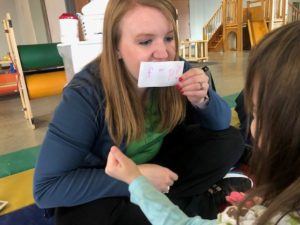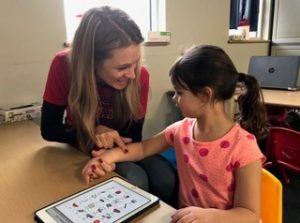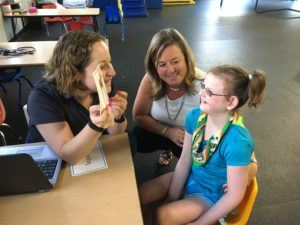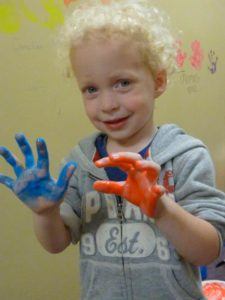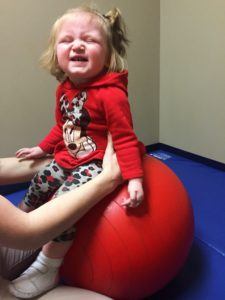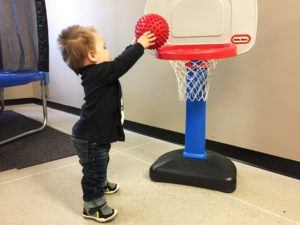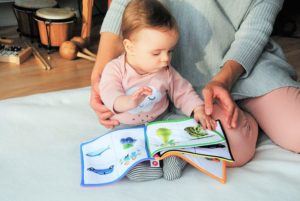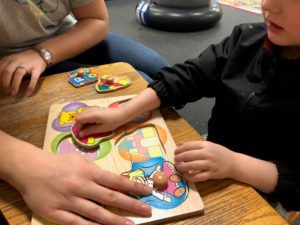Uncategorized
If your child has a speech disorder, he or she might be able to qualify for financial aid. The Social Security Administration (SSA) offers disability benefits to people of all ages who are unable to work, or in your child’s case, participate in typical childhood activities due to a disability. Speech disorders alone will not qualify, but depending on the cause of your child’s speech disorder, he or she may be eligible.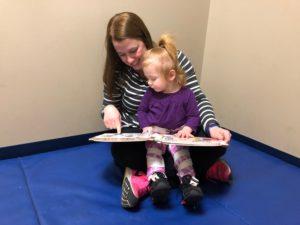
Technically Qualifying for Social Security
All children are eligible for Supplemental Security Income, or SSI benefits. SSI is only awarded to families with a severe financial need. This means that if you or your spouse earns a decent wage, you will not be eligible for disability benefits. The larger your family, the higher your monthly income limit will be.
For example, if you’re a single parent and you have one child, you cannot earn more than $38,000 before taxes in 2018 and still qualify for SSI. If you are a two-parent household of five, you could earn a little over $55,000 and still qualify. You can view a chart on the SSA’s website to determine how much your unique family could make while still qualifying.
Unfortunately, most children are denied SSI benefits due to household income limits. The good news is once your child turns 18, your income will no longer against your child, even if he or she still lives at home.
Medically Qualifying With a Speech Impairment
All conditions that qualify for disability benefits can be found in the Blue Book, the SSA’s manual of qualification criteria. There is a separate version of the Blue Book for both children and adults. Children do not qualify for a speech disorder alone, so this means that if your child has no other diagnoses or disabilities, he or she will unfortunately not qualify for disability benefits due to an inability to speak.
If your child’s speech impairment is cause by another condition, he or she may be eligible. There are many qualifying conditions listed in the Blue Book, but some conditions that often qualify include:
Autism
Autism can be found in Section 112.10 of the Blue Book. Under this listing, your child will qualify if he or she has measurable difficulty in any form of communication (verbal, nonverbal, social interaction) and has severely limited interests or participates in repetitive patterns of behavior. Children with autism will also need to have medical evidence proving severe difficulty with one of the following areas of physical functioning:
- Understanding and remembering information
- Interacting with others (playing with children, following adults’ instructions)
- Concentrating and accomplishing tasks
- “Adapting oneself,” which means controlling emotions in a school setting
Down syndrome, on the other hand, will automatically medically qualify with a karyotype analysis. The only exception is if your child has Mosaic Down syndrome (2% of the Down syndrome population), which often has less severe health and intellectual complications will need a little more medical evidence.
The en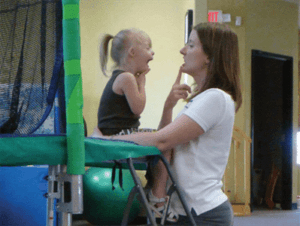 tire Blue Book can be found online so you can review the listings with your pediatrician to see if your child qualifies.
tire Blue Book can be found online so you can review the listings with your pediatrician to see if your child qualifies.
Starting Your Application
Before applying, you should always review the Child Disability Starter Kit to get a list of all documents needed before officially applying. You’ll have to apply for SSI benefits in person at your local SSA office. Your child does not have to be present for the application process. To schedule an appointment to apply in person, call the SSA toll free at 1-800-772-1213.
Helpful Resources:
Household SSI Limits: https://www.ssa.gov/ssi/text-child-ussi.htm
Childhood Blue Book: https://www.ssa.gov/disability/professionals/bluebook/ChildhoodListings.htm?PHPSESSID=2e1852cec574b204c1062189dbe882f2
Local SSA Office: https://www.disability-benefits-help.org/social-security-disability-locations
Child Disability Starter Kit: https://www.ssa.gov/disability/disability_starter_kits_child_eng.htm
Provided to ABC Pediatric Therapy Network, https://www.abcpediatrictherapy.com by:
Deanna Power
Director of Outreach
Disability Benefits Help
Read MoreAnswering and asking questions is an important part of learning. We ask questions in order to learn more information about something, and we answer questions to provide more information. Asking and answering questions is not only a part of how we learn, but it is also a part of our social skills; we ask and answer questions to be polite and build and maintain relationships. Types of questions we ask and answer include “who”, “what”, “where”, “when”, and “why”.
Answering questions involves having a child hear the question, think about the meaning of the question, understand the meaning of the question, form an answer, and speak the answer that they formed. Asking questions involves thinking about what you want ask, forming the question in your mind, and then producing the question that you want to ask. For children with speech and language delays, asking and answering questions can be a challenge. This challenge in asking and answering questions may affect their ability to learn and their ability to develop and build relationships.
Believe it or not some questions are easier to ask/answer than others. “What” questions are the easiest to learn, followed by “Who”, then “Where”, followed by “When”, and finally “Why”; “Why” questions being the most difficult for children to learn and master.
The following is a basic guideline on the types of questions a child may ask/answer according to their age. More information can be found at: https://parentresourcesblog.files.wordpress.com/2013/05/questions-development.pdf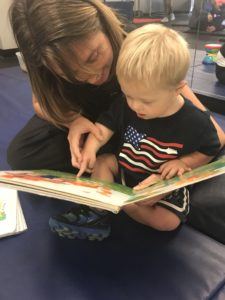
· Between 12-24 months, a child should be able to answer basic “What’s this?” questions about familiar objects, answer basic “where” questions by pointing, answer basic yes/no question by shaking their head or nodding, and use a rising pitch in their voice to indicate that they are asking a question (e.g., Daddy? to ask “Where is daddy?”)
· Between 24-36 months, a child should point to objects being described (e.g., “Where do you wear a hat” and the child points to their head), answer longer “Where”, “What…doing”, and “Who is” questions, understand “Can you” questions, ask questions to get their basic wants/needs met (e.g., “where cup?”), and ask one-word “why?” questions
· Between 36-48 months, a child should answer more complex questions, answer questions about object functions (e.g., what do you do with a spoon), and answer “if…what” questions (e.g., if you get sick, what would you do?)
If you find that your child is having difficulty asking/answering questions determine the type of question(s) that is the most problematic. Once you have figured out the type of question that is challenging for your child, talk about what it means to ask/answer that type of question. For example,
· “what” means we are talking about a thing, such as the dog, the house, a cracker, etc.
· “who” means we are talking about a person, like mommy and daddy, grandma/grandpa, etc.
· “where” means we are talking about a place or location, such as the park, our house, or in the kitchen.
· “when” means a time, such as daytime/nighttime, breakfast, summer, yesterday, or even a month like December
· “why” means a reason, such as I fell down because I tripped on a rock.
Once you have talked about the type of question that is troublesome, use games and activities involving questions to teach your child about asking/answering questions while having fun at the same time. Games and activities could include, but are not limited to: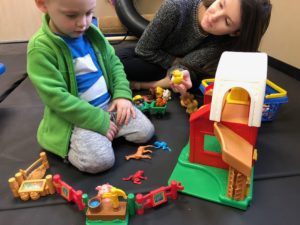
· “Wh” Bingo
· I Spy
· Asking questions while reading a book
· Asking questions while playing with toys (e.g., Where is the cow? What animal is this?)
· Headbanz Game
If your child is still struggling to ask/answer questions or other speech and language skills, it is recommended to seek out a Speech and Language evaluation from your local Speech Therapist to determine if your child would qualify from services to improve these skills. For more information visit https://www.abcpediatrictherapy.com
Read MoreSpeech Skills involve our ability to communicate our wants and needs to others. In order to communicate, we need to say the correct words, with the correct sounds, as well as understand what others are saying to us. Our speech skills are very closely related to our feeding skills because the same muscles are used for both. These skills develop quickly throughout our growing years. Proper development of speech skills requires strength, coordination, postural control, attention, and cognition. It also requires appropriate function of our sensory system.
Speech skills are very important to a child’s overall development, health, learning experiences, and self-esteem. Developing independence with speech skills at an early age is crucial to school performance and social interaction. Speech skills allow a child to express their basic wants and needs. Skills necessary for eating are important for nutrition and overall health. The human body follows a step by step process, where one area often relies on another to achieve full function. 
Each milestone that is achieved throughout the first years of life is dependent on the one that came before it. To be able have a conversation, we must first learn to put two words together. We need to learn how to produce a sound before we form full sentences. We need strong muscles in our mouths to eat healthy fruits and vegetables. The body goes through a complicated movement process. If a child is not achieving a milestone within a reasonable time frame, it is important to ask questions and seek out guidance right away because the next set of skills is coming up fast. The longer you wait, the further behind the child will fall. The earlier an intervention is provided, the more effective it can be.
Go to https://www.abcpediatrictherapy.com for more information and to reach out to ABC staff to answer your questions. We are here to help!
Read MoreThis year back to school looks very different for many children and parents. 2020 has brought many challenges for us all.
Here are some tips that might help both you and your child return to the classroom stress free.
Mask tips:
1. Practicing at home for short periods; play fun dress up games
2. Let them pick out the mask or the fabric to make the mask
3. Let them decorate the mask
4. Consider which fasteners might work best for your child (loops around the ears or ties at the back of the head) Try different fabric liners to see if there is one that is less irritating to them
5. Be a positive role model for wearing a mask
6. Make masks for their favorite doll or stuffed animal
7. Takes breaks from the mask if they are having to wear it for several hours (go outside or to an isolated area where it is safe to remove it for a brief period of time)
8. Use social stories to help them understand why the mask is needed Rewards or incentives for trying or being successful

Tips for the parent:
- Children pick up on your cues. Be sure you talk to yourself first and find the positive perspective about return to school before addressing it with your child.
- Remember as a parent your success is measured by your ability to raise a happy, confident, well adjusted child that turns into a productive and happy adult.
- Advancing a grade is the next adventure for your child. As the parent, you get to watch and coach them through the next part of life’s challenges. Teach your child that problems are just barriers to be overcome. It is like winning a game each time you solve the next problem. Confront those challenges head on! Break each one down into little challenges to be met.
- Live by example. Talk to your child about how excited you are about school starting. You love that your child gets to meet a new teacher, make new friends and learn more things.
- Truly get yourself to a place where you are excited about your child going back to school. Maybe appreciate the structured schedule that school will bring. Bed times are more consistent allowing adult time later at night. Perhaps school schedules allow for more family dinners. Find the positives!
Tips to share with your child:
- Tour the school and meet the teacher. Talk about how familiar everything will be now that your child has been to the school.
- Take a family walk to the bus stop and home.
- Walk from the classroom to where the buses will be parked and back to the classroom.
- Try to find 1 or 2 friends that will be in your child’s class.
- Find out who has lunch with your child so they will know at least 1 other person to eat with.
- Allowing your child to pick out their own backpack, lunchbox, clothes, makes them excited to use/wear them when school begins.
- Let your child grocery shop for lunch items so they are excited to get to eat the food.
- Find a neighbor whose child had the teacher your child will have and let the neighbor child talk to your child.
Above all talk to your child about how you believe in him/her. You know they have the confidence to meet this next grade head on and thrive. Remind then of when they were younger and worried about something and how it turned out wonderfully.
Count down to the first day of school like it is an event to look forward to!
Good luck this school year!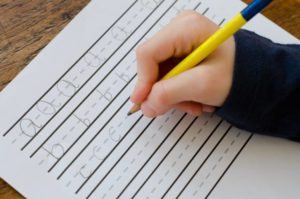
As the year progresses if ABC Pediatric Therapy Network https://www.abcpediatrictherapy.com can help in any way to make the school year a success, let us know!
Read More
Here are some great tips to help improve your child’s handwriting:
1. Use a finger to space out your words if you are having difficulty with word spacing.
2. Participate in hand strengthening activities to increase hand strength and endurance. Some ideas of hand strengthening activities include: using theraputty and finding small objects hidden in it; or squeezing open a tennis ball with a slit cut in it to put small items inside (pictured below).

3. Practice appropriate letter formation by writing letters in shaving cream, pudding, sand, or other material. Using a variety of media to form letters can make writing more fun while improving letter formation.
4. Participate in fine motor coordination activities by hiding a small item in the palm of your hand (such as a penny or marble) and then bringing it out to the fingertips using the same hand. Try then to bring the item back into your palm in the same manner.
5. Lacing string through holes and stringing beads of different sizes onto string (the smaller they are, the more difficult) can help with fine motor coordination.
6. If letter size is difficult, highlight the top and bottom lines to have a visual boundary for the letters.
7. Try a pencil grip or a different type of pencil (longer, shorter, wider) to see if it improves handwriting.
8. Become your own editor – make a list of “rules” for handwriting and go back to check your own work. Some ideas of rules include: using capitals and punctuation, spacing between words, skyscrapers touch the sky and dirt diggers go under the ground, etc.
Written by: Hilary Lee, MPH, MS, OTR/L
If your child is having difficulty with handwriting, please reach out to your pediatrician for guidance. Occupational Therapists (OTs) at https://www.abcpediatrictherapy.com have the expertise to help your child. OTs love to teach parents how to help their children with handwriting.
Read MoreHere is a simple checklist to know when to challenge your child: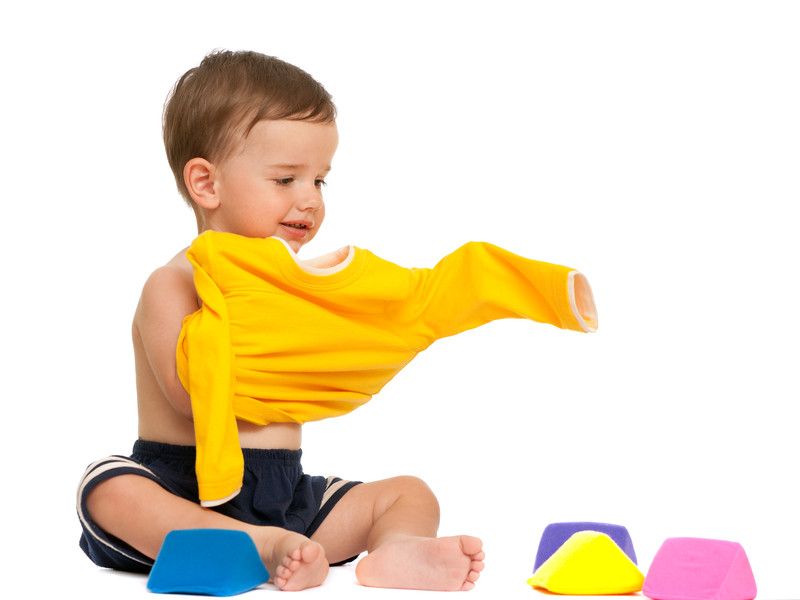
1 year Pull off socks
2 years Scribbles
3 years Eats with a fork
4 years Dresses Self
5 years Ties shoes
If your child is struggling with any of these skills, I suggest you do the following:
- Practice – this might seem like common since but not in the busy life of a household with children!
- Leave extra time – plan ahead and leave time for the child to try and try and try again.
- Do not let sibling help! – instead let siblings role model for the younger child and cheer when there is success!
- Be persistent – require that the child do the skill himself and encourage but do not do it for him!
- Start letting the child help you dress them before they should be doing it themselves so that they are ready and willing to take over the task!
Your child will be so proud of himself with each success!
I truly believe that confidence is more important than intelligence. Let’s inspire, motivate, empower….build confidence!
If there is anything we, at ABC Pediatric Therapy Network, can do to help you do not hesitate to reach out to us! We are here to help “create the best life for all children”! See our website for full checklists for each age. This will help you to know when to challenge your child with each new skill. At ABC, we want to help you be the best parent that you can be. That just takes knowledge so you know when and how to help your child.
Read MoreUsing a therapy or exercise ball at home with your child can greatly contribute to your child’s success as it provides an extra pair of hands that help your child have greater control over their movements! The ideas below can help your child with muscle strength, using their muscles in a controlled manner, sensory processing and balance control. Activities (Please consult with your therapist to find out which are best for your child):
• Allow your child to lay on their stomach over the ball and roll forward, back and side to side while playing a board game.
• Help your child to lie on their back over the ball and reach to the floor with their hands over their head.
• Have your child rest with their back against the ball with their feet on the floor.
• Have your child sit on the ball with a straight back and feet on the floor and throw a medium sized ball overhead to you or the wall.
• Have your child sit on the ball at the dinner table with feet on the floor to allow your child a sense of movement while staying seated.
• Have your child perform the above exercises while playing board games, watching television, reading, doing homework or while throwing/catching/rolling a ball.
• Some classrooms will allow your child to sit on a ball while doing class work as it can help your child have a sense of movement while staying seated.
Tip: Small children or children who are very involved will do better on a large ball as this provides a larger surface area and they don’t have to work so hard against gravity. If the child has milder problems a smaller ball will be more of a challenge.
Read MoreWHAT DEVELOPMENTAL SKILLS SHOULD MY CHILD BE DOING BY 24 MONTHS?
GROSS MOTOR SKILLS
* Stoops to retrieve toy and returns to stand
* Kicks ball
* Jumps down off low surface, jumps forward
* Goes up stairs without a rail placing both feet on each step
FINE MOTOR SKILLS
* Imitates horizontal and vertical strokes
* Can match 3 shapes
* Builds 6 cube tower
* Places simple puzzle pieces that match a formed shape
SELF HELP SKILLS
* Can help pull up pants
* Puts head through hole of shirt, finds armholes
* Efficient spoon feeder, some difficulties with scooping still
SPEECH/LANGUAGE SKILLS
* Has vocabulary of at least 100 words
* Uses 2 words phrases on a regular basis
* Uses some 2 word utterances
* Uses some pronouns
* Is at least 60% intelligible to all listeners
* Follows 2 step related commands
If your child is not doing most of the skills above, consult your pediatrician and consider getting a therapy evaluation. A therapist can give you ideas of how to encourage development at home.
Read More10 DEVELOPMENTAL BENEFITS OF READING!
- One on one interaction with your child!
- Pre-reading skills (how you hold a book, reading left to right, what words look like)
- Helps develop fine motor skills for turning pages
- Helps develop understanding of action words (running, swinging, eating)
- Teaches concepts of space (under, over, below, in)
- Increases your child’s vocabulary
- Many books promote rhyming skills (important for future reading and writing)
- Strengthens the relationship of listening and talking
- Helps your child learn what sounds the letters make
- Helps your child learn color, number and shape concepts!
Listed below are some great ways to target sequencing skills:
Create an obstacle course and have the child follow 2-3 step directions
Have the child describe basic routine events by telling what he or she did first, next and last (e.g. brushing teeth)
Have the child follow 2-step directions using “before” and “after”
Have the child participate in basic multistep events/tasks (e.g. making a pizza) and talk about the steps using “first, then, next, last”
Then have the child recall each step
Have the child sequence events of a story by recalling what happened in the beginning, middle and end
Have the child sequence events from a movie/television show by recalling what happened in the beginning, middle and end
Read More
 Skip to content
Skip to content
